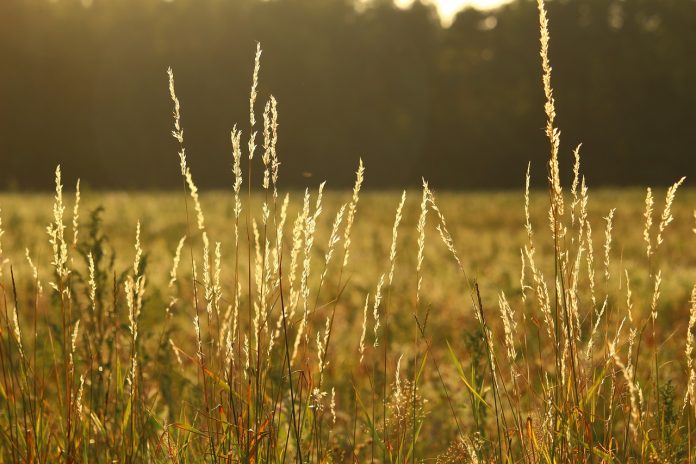It’s a cold spring so far in eastern Ohio by most measures. A quick check on the growing degree day (GDD) calculator indicates we match 2020 in accumulation so far with 2018 as the coldest spring in the past five years, at least by GDD accumulation measured since the first of the year.
This morning was a hard frost, but we are counting down the days to our frost-free date. I’m already dancing with the weather forecast and ambitiously buying plants I must protect for a few more weeks before they can survive outside the house on their own.
Temps have been running from average to below average for the month of April, locally. Just to put some perspective to it, in my county in Ohio along Interstate 70, a normal temperature on April 21 is between 43°F and 67°F. On May 1 it increases to 46°F and 70°F, and on May 15 a normal range is 51°F to 74°F.
Last week I was a bit shocked to hear a report that Ohio was running drier than normal precipitation for the current season. My casual observations suggest that for the past month you couldn’t find a stretch longer than 36 hours without precipitation in my local area. As of today, the opportunity for fieldwork has been pretty thin this month and soil temperature remains cool. The weekend forecast looks to start changing that.
Weed control
Speaking of fieldwork, I’m sure the list is long for many of us. But, those weeds are starting to grow and spring can be an ideal window to work in some weed management if mowing isn’t getting you where you need to go.
For growth to kick into high gear, I like to watch for soil temperatures that get above 50°F and overnight temperatures to be above 50°F. Biological activity is relatively slow but noticeably increases at temperatures above 50°F. Raise that up to 60°F and things really start to take off.
This comes into play when thinking about the use of herbicides in weed control. The ideal temperature for applying most post-emergent herbicides is between 65° and 85° F. You can apply between 40° to 60°F, but the progress of absorption and translocation of herbicides to and into the weeds is slow. In an extended cool period, efficacy could be reduced.
In pastures, late summer and fall tend to be a great season for herbicide application and mid to late spring provides good opportunities, also. Actively growing weeds are essential for good herbicide efficacy. Frost damaged or dormant plants make poor targets.
Timing
If herbicides are what you need to tackle a problem, ask these questions about temperature and timing and their impact on the product you are looking at. Generally, the above temperature guidelines hold true, but there are exceptions to every rule.
Another thought that might arise here also is if you find yourself repeatedly seeking herbicides as a solution in pasture management, it may be worth evaluating the whole system of species planted, grazing practices and fertility management.
In an ideal world, our planted species, seeding rate and fertility management should allow for a very limited need for herbicides. It is a worthy goal to manage pasture without ever needing herbicide, but I would say there are many tools in the toolbox, of which herbicides are one, but shouldn’t be the first one you reach for.
As with many agricultural endeavors, the best results often come with strategic timing. If a new seeding is in the future, it is often warranted to control the weeds first, then plant and focus on a good healthy stand to compete against undesired plants. Several labels I have read state to avoid mowing or clipping within a certain number of days of spraying in order to ensure plants are not stimulated to produce new growth that combats the work of the herbicide.
Ultimately, getting familiar with the pasture and knowing the weeds that are present determines your weed control program. Annual weeds should be mowed prior to or just after flowering. That is generally true of biennials in year two of their life stage as well. Perennial weeds will likely take a combination of mowing and herbicides. Usually, herbicide application in late September through October brings the most bang for your buck and targets perennials and many biennials.
How do you know if you need to spray?
Get to know the plants and the potential for toxicity to livestock or potential to overtake a field. Some plants invoke a pretty quick response to pursue control if we know the risk (spotted knapweed, for example).
Get to know which weeds are appearing at certain times of the year so you know when it makes sense to target the species with mowing or spraying. Maybe its simply attempting a small test patch in a field to observe the results to determine if you want to take further action. Identify a management goal, pursue that goal and assess the results for suitability.
There are plenty of decisions to make this spring. Watch out for weeds and be thinking about your options as you go about your work and enjoy some warmer weather.













